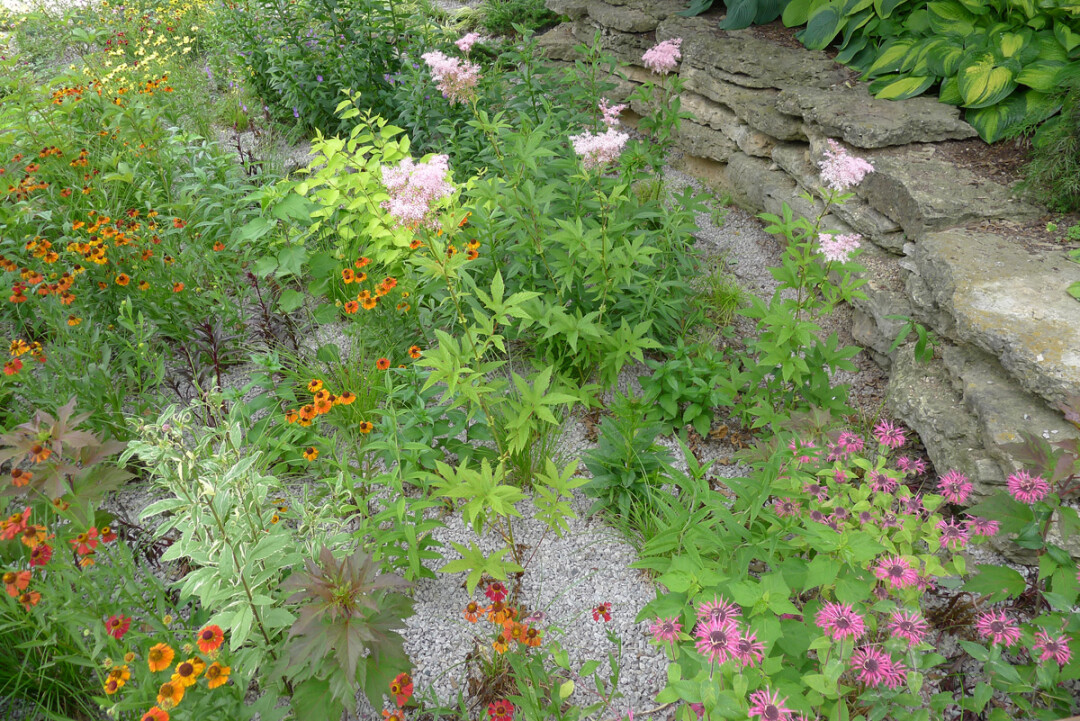Rain Gardens Keep Green Water Away

Last fall, a rain garden was planted along the banks of Lake Menomin in Menomonie. The people who planted it hope that it will show their neighbors a way to help prevent blooms of cyanobacteria (also called blue-green algae) in Lake Menomin.
Cyanobacteria blooms are a big problem. They make people sick and turn lakes stinky. Cyanobacteria has been around for millions of years, and blooms have been recorded since the 12th century. However, some of our modern habits may make blooms worse. To bloom, cyanobacteria need a lot of nutrients, such as phosphorus and nitrogen. These are the same chemicals found in fertilizer. During a storm, fertilizer is washed off the land and carried quickly into lakes along pavement, sewer systems, and lawns with short grass.
Rain gardens, such as the one on Lake Menomin, are one way to decrease how much phosphorus and nitrogen gets into the lakes. Rain gardens have native plants – such as milkweed, iris, and little bluestem – that have wide, deep roots. They slow down water’s path to the lake and allow it to sink into the ground. Soil and roots filter out nutrients and pollutants. Often rain gardens are built into depressions in the ground to collect even more water.
Even if you don’t live on a lake, planting a rain garden in your yard will filter storm water before it enters the sewer system. For example, a rain garden on Eau Claire’s Water Street filters run off from a parking lot.
The early fall, when the air is cooler but the soil is still warm, is a great time to plant native perennials.
The Wisconsin Department of Natural Resources has more information about rain gardens online at dnr.wi.gov/topic/stormwater/raingarden/.


















